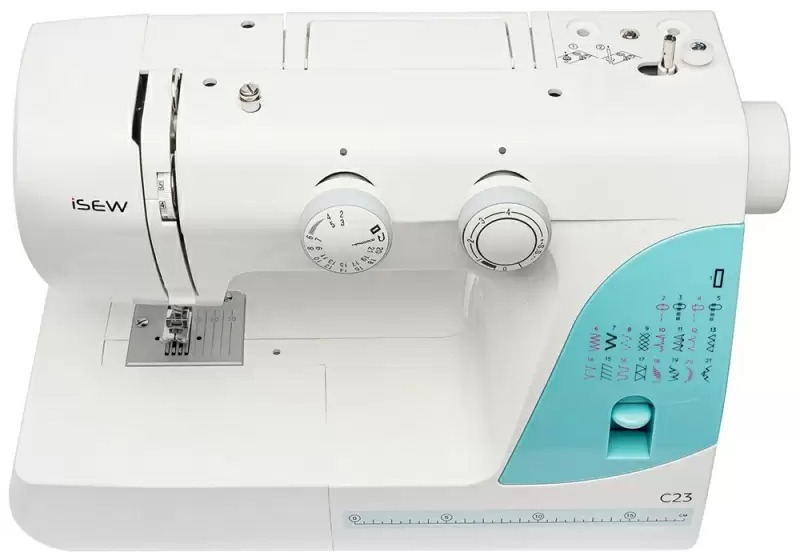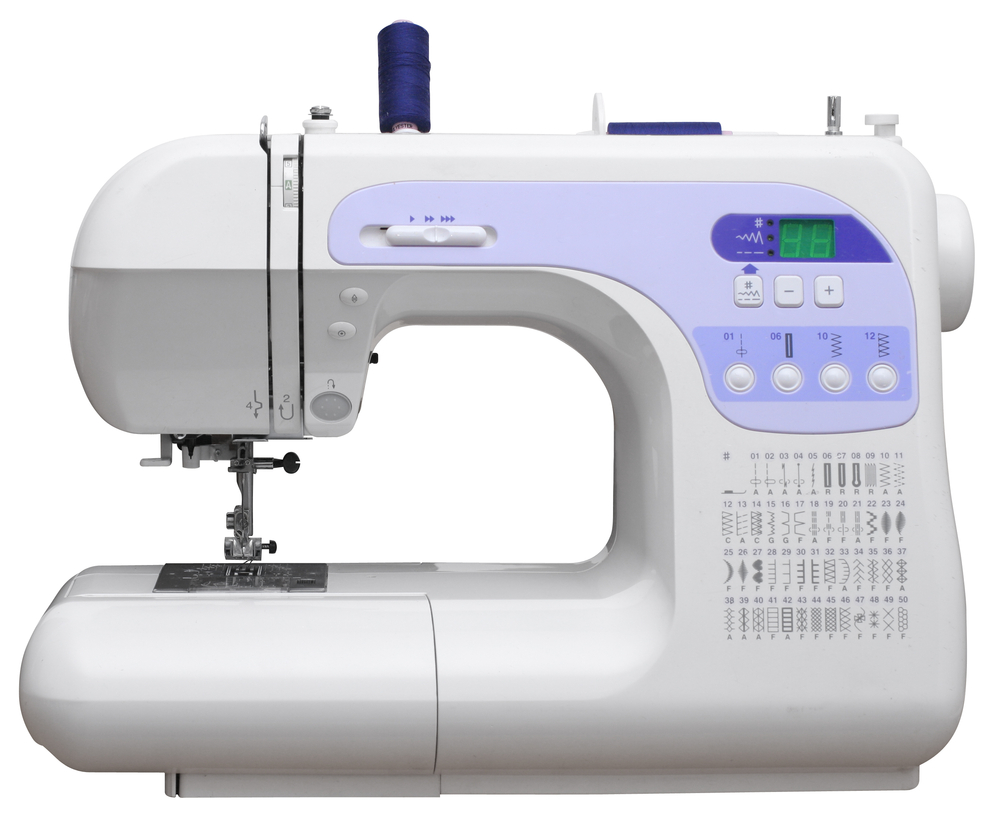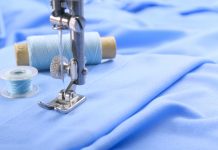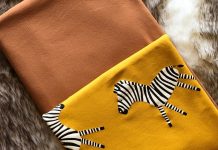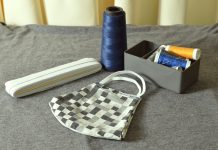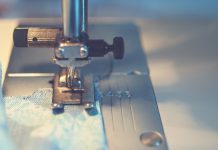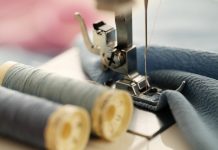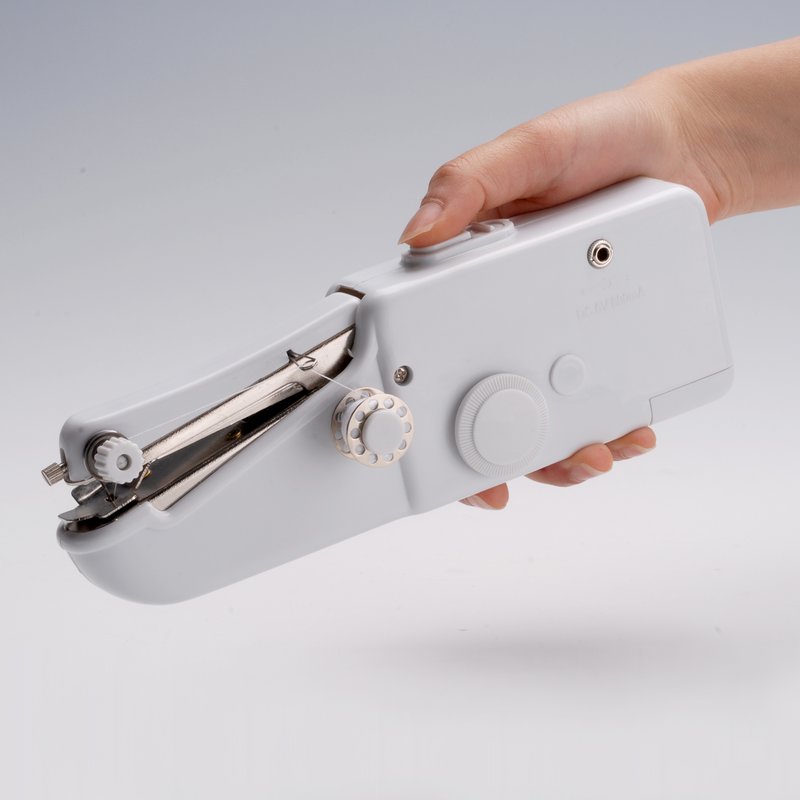Sewing machines have multiple different functions, stitches, and options. However, its basic operation never changes no matter what the machine. Once the basics are mastered, using any machine becomes relatively easy. To become familiar with all the functions of your machine, read through the user manual.
If your machine has been passed down, you may not be in possession of the manual. It can also be so well-used that it is difficult to read as well. Sometimes, you can find a downloadable one online (it’s amazing what you can find). However, locating it will enable you to become more familiar with your sewing machine.
If you can’t find them online, try eBay or Craigslist. Sometimes they come up for auction.
Sewing Machine Parts
If you are a beginner, learn the different parts of your machine. This will help in threading it properly, using it, and troubleshooting problems should they arise. Both new and traditional models have the same basic parts. The only difference is that newer machines are less exposed.
Memorize the basic parts and where they are located. This will help you in operating the machine.
Pedals Are Used to Control Speed
A sewing machine’s foot pedal controls how slow or fast the machine goes. While there is a tendency while you are learning to go quicker, you may want to take things slower while you are learning the machine. Going too fast may cause you to make mistakes. In this case, you may want to go easier on the foot pedal.
Most machines can zip along quite quickly. To become more familiar with the speed of the machine, experts recommend using it barefoot.
To start, keep the heel on the floor. Place the ball of the foot on the foot pedal. Use just the big toe to press down on the foot pedal if you are unable to control the machine’s speed. Practice learning how to control the speed without it being threaded.
Once you have mastered the speed of the sewing machine, then thread it and practice on a scrap piece of fabric.
Become Familiar with the Sewing Machine Needles
Various densities of fabrics require different needles. If the correct one is not used, the stitches will start to be skipped. Weight and fabric type all need to be considered when choosing the proper needle.
Don’t be Afraid to Use a Guide
Watching a needle go up and down as you sew can create off-roaded lines when you really want a straight stitch. The best way to accomplish a straight stitch is to use a guide while sewing.
Watch the material line up with the guide as to try to sew straight seams. The guide can be found on the bed of the sewing machine or the presser foot.
Try to experiment with the needle position. This will also help you when you sew.
The Feed Dogs Require Familiarizing
These are responsible for feeding the material under the needle and through the machine. It works alongside the presser foot in feeding the fabric. All the person needs to do is guide the material between the presser foot and feed dog.
If material is forced into the machine or the fabric is tugged through, the needle can become bent. This creates all sorts of issues. Allow the machine to do all the work, and simply feed the fabric through at a steady pace.
Threading the Machine
The user manual is the best way to learn how to thread the sewing machine. If you don’t have the manual, the basic rules are all you need to start.
Before beginning, be sure the pressure foot is up. This releases the tension allowing the thread to seat properly. The difference can be tested by tugging the thread at the needle while the presser foot is in an upward position. Then test it with the presser foot down. The thread should pull smoothly if it is done correctly.
Always Use Quality Thread
While grabbing a cheap spool of thread may seem like a good idea. However, you may encounter issues with a low-quality thread. Additionally, thread ages and this may cause the machine to not work properly. High-quality thread always makes a difference.
How to Use the Foot Pedal Properly
Some newer models of sewing machines come with a start/stop switch directly above the needle. Some also have a speed control function as well. However, if you have always used a foot pedal, you may find this type of set up strange.
For some people who sew, they enjoy being able to control the speed in which they do a project. A light touch on a pedal makes it go slower for more detailed stitching requirements. A heavier touch makes it go faster. Yet, if you just have the switch, you are unable to control the speed in which you sew. For a beginner, it may not be the most ideal situation.
The following reasons are why most people want to control the speed of the foot pedal:
- The speed at which they start a seam and end are not the same.
- Speed on a curved seam or bias can change depending on the alignment of the fabrics or whether they need to be guided into place.
- Tote bags require different seams. The speed needs to be adjusted for them.
- If you don’t pin your work, you may need to stop to adjust hems
- Fabrics may need to be adjusted if they don’t align properly
- Free motion quilting needs to vary sewing speed depending on detail
- Machine appliques may require speed variations
Users can do this with a hand switch, but it takes timing and effort. It is more difficult to adjust the speed this way.
If your foot pad tends to travel (as many of ours do), you can place a non-stick piece of fabric underneath it to hold it into place. A piece of carpeting can work just as well, but even this can move around a bit. You can also use the Pedal Sta II to hold it in place as well.
In using a foot pedal for sewing, all you need to do is thread the machine. Then, place your fabric on the arm. Put the needle down into the fabric and begin sewing by pressing the foot pedal.
If you are just learning, press down on the pedal gently. Softly guide the material through the machine in a straight line. Take it slow at first, and when you become more confident, you can increase your speed.
The best pedal sewing machine for beginners is the Aonesy. It is lightweight and comes with many features. It has 20 stitches- blind hem, decorative, zigzag, and stretch stitches. It is great for a variety of projects for sewers of all levels. It can even sew upholstery with ease!
Practice and dedication are what is required when learning a sewing machine. The more knowledge you have regarding the way it works, the more equipped you will be in using it. You will also be able to troubleshoot problems quicker, and keep the machine running in top condition.
Using a sewing machine with a pedal is probably the best way for a beginner to learn how to use a sewing machine. You don’t have to continually battle a switch for speed, and your foot directly controls exactly how fast you go.
If you have been sewing for years, you may be very familiar with a foot pedal. Using a machine with a switch may seem foreign to you and require some getting used to.
Yet whether you are a beginner or an expert, learning how to operate a sewing machine with a foot pedal comes down to knowing your machine, what it does, and practicing how to use it by going slowly at first, then speeding up as you become more familiar with the machine.

